Warships. Cruisers. Cardboard gold carrier of the Republic
Very interesting story of this ship, full of contradictions. "Emil Bertin" was planned as a cruiser scout, the leading destroyer, but in the course of development it was redone and built as a cruiser mine-loader.
The French command initially prepared for a series of ships of 3-4 units, but then decided to see how it would be in practice, and only one ship was launched, and the hero of the next story, La Galissoniere, went into the series.
Emil Bertin fought the whole war, but was never used in the original capacity as a mine layer. But - he went through the entire Second World War "from bottles to bottles".
Let's start with the story of creation. It began in 1925 and was very original.
In general, it all started with a mine-mine project. In those years, France had two potential adversaries at sea: Italy in the Mediterranean Sea and Germany in the north. True, Germany after the defeat in the First World War could not be taken seriously, and therefore the idea of a mine blockade was born with the help of high-speed minzags.
Based on the minimum length of one obstacle of 7,5 miles with a maximum mine interval of 40 m, such barriers should have carried about 350 minutes.
The French had a Pluto mine-loading project with a displacement of 5300 tons, capable of taking 250 minutes on board. After analyzing the requirements, the French shipbuilders calculated that for the transportation of 350 minutes to a range of 2000 miles, the ship had to have a displacement of about 7500 tons.
7500 tons - this is a rather big ship, therefore, it was decided to abandon the increased "Pluto" in particular and from "Pluto" in general.
And the French decided to simply cheat and take the number of ships. That is, to establish mine rails on all ships under construction, starting in 1928. Cruisers, destroyer leaders / destroyers, destroyers, colonial auxiliary cruisers - all had to carry mines. And if necessary ...
That is, a squadron of 5-8 ships could pour as many mines into the sea as one specialized ship. In principle - quite an idea.
And then what happened? And then there was the Washington Agreement, which hit France and Italy very hard in terms of restrictions. Meanwhile, France possessed a very strong set of colonies, which had to be controlled and defended. And the restrictions on tonnage did not make it possible to build the proper number of warships to solve such problems.
And in the end, the project was born of a cruiser-mine loader with a displacement of 6 tons, capable of carrying up to 000 minutes, minimally armored, but with a maximum speed, armed with 200-mm guns.
In general, this misunderstanding should satisfy all the requirements of international treaties.
An interesting alignment, isn't it? A minsag of 5300 tons and 7500 tons will not work, and a cruiser with a choke function of 6000 tons is the thing!
The preliminary design of 1929 had the following characteristics:
- standard displacement: 5980 "long" tons;
- normal displacement: 6530 metric tons;
- length: 177 m;
- power: 102 000 hp.;
- speed at normal displacement: 34 knots;
- cruising range: 3000 miles in 18-node travel.
On May 15, 1934, the cruiser was completed and presented for testing. On the first test run on June 28, the cruiser developed 34,8 knots, which significantly exceeded the contract 32 knots. Next was the official test program, during which the ship showed 40,2 knots. The speed characteristic of the destroyers (and even then not all), but not for the cruiser.
After testing and correcting deficiencies, in January 1935, Emil Bertin was enlisted fleet.
The hull of Emil Bertin was characteristic of French ships of the interwar period - with a forecastle, curved stem and aft tip of the duck tail type. To ensure high speed, the body was greatly narrowed - the ratio of length to width exceeded 10,5: 1. The speed was really impressive.
They sacrificed a lot of speed. In general, French shipbuilders tried to make the construction as easy as possible. Only elements of the power set were connected with riveting, all other connections were welded. Duralumin was widely used for superstructures and internal structures, as a result, the weight of the hull with protection amounted to 46% of the standard displacement.
About protection. There was no protection. 4,5% of the displacement or 123,8 tons. The conning tower was “armored” with 20 mm armor, the cellars were armored with two layers of sheet armor 15 mm thick each. All.
Elevators for shells, rangefinding posts, but what's there, even the main caliber towers - everything was sacrificed to weight loss. By the way, the GK tower on Emile Bertin weighed 112 tons, and on La Galissoniere - 172 tons. Feel the difference, as they say.
To ensure at least some survivability, the ship inside was chopped into compartments with a total number of 14. Quite advanced. Nine 30-ton pumps, five of which protected compartments with boilers and turbines, also had to fight for the survivability of the ship.
The struggle with weight, however, resulted in the need to strengthen the towers. The cruiser couldn’t shoot at full speed on the go, the weakness of the structure on the one hand and the obvious congestion of the bow on the other affected.
But seaworthiness and speed were really at their best. The 800-meter turning radius was so-so, but not critical.
Emile Bertin was in some ways the first in the history of French shipbuilding. It was on this ship that the cruisers led to a single caliber for light cruisers of 152 mm instead of 155 mm and very exotic 164 mm.
And for the first time in the fleet, the GK guns were located in three-gun towers. Two in the bow, one in the stern. The towers were rotated by electric drives 135 degrees on each side.
GC firing control was carried out with the KDP on the mast, which was connected to the central artillery post. The values of the angles of horizontal and vertical aiming were transmitted to the towers by the Grenade system. In case of failure of the main command and rangefinder post, towers II and III were equipped with 8-meter OPL stereo range finders of the 1932 model.
Everything was very modern for the 30s, but there were also negative points. Since there was one KDP, it was unrealistic to fire at two targets. And the second point: KDP very slowly rotated! The KDP made a revolution around its axis in 70 seconds, which was a little faster than the towers rotated.
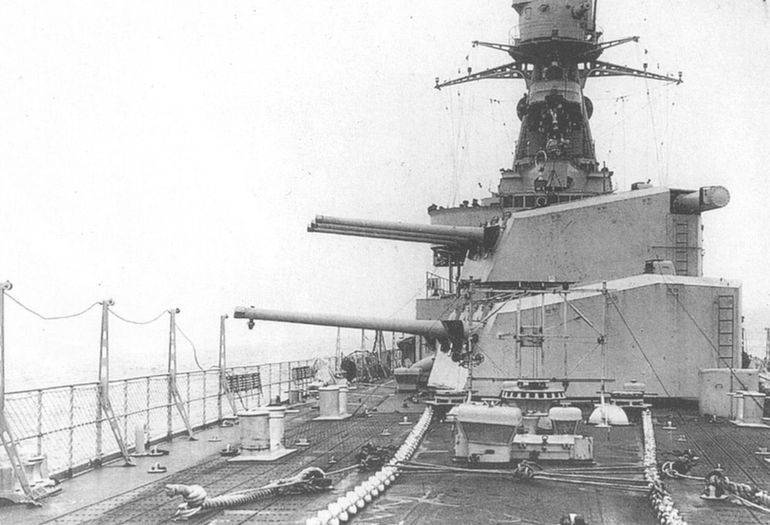
And if in battle the ship began to maneuver vigorously, then there was a temporary mismatch of the central aim, and the towers had to switch to independent fire control.
Two points, but they could seriously complicate the life of the ship in battle.
Universal artillery of medium caliber was such. It consisted of very good 90-mm guns and could both repel the attacks of destroyers and fire at air targets. The guns were very rapid, up to 15 rounds per minute, but when firing at aircraft with an elevation angle of more than 60 degrees, the rate of fire fell due to inconvenience of loading.
What the French did not have was decent air defense. With this they are similar to the Soviet ships. Therefore, Emil Bertin was no exception. Since everything was sad with machine guns, the cruiser received only 4 semi-automatic 37-mm guns and 8 Gochkis machine guns 13,2 mm. The guns, in principle, were good in projectile and ballistics, but the rate of fire of about 20 rounds per minute was not enough for air defense. The machine gun was also not bad, but the store food (30 rounds magazine) nullified all the positive qualities weapons.
The torpedo armament of Emil Bertin consisted of two three-pipe 550-mm 1928T models, located on the upper deck side-by-side between the pipes. The shot was fired with compressed air, reloading at sea was not provided, because there were no spare torpedoes.
At the stern of the cruiser, two detachable bomb-throwers for 52 kg giro-type depth charges were installed. The ammunition stockpile included 21 depth charges, of which 6 were on bomb spreaders and 15 on the rack in the immediate vicinity. Manual bombing calculated the bombing device.
Well, mines. Mine paths were removable, 50 meters long. They could be installed if necessary, and in the stowed position they were stored under the upper deck. To set mines on rails, two crane beams served, and set the mines manually.
"Emile Bertin" could take 84 mines of type "Breguet" B4. The mine was small (530 kg total weight) and was developed for use on destroyers and counter-carriers. In general, compared to 250 mines of the initial project, 84 - as it were, did not look very weighty.
But it’s also worth noting that throughout his career Emil Bertin delivered just 8 minutes. It was in trials.
Was and aviation armament. Emil Bertin was equipped with a 20-meter Swivel pneumatic ejection catapult. For lifting seaplanes from the water, there were two cranes with a lifting capacity of 2 tons, in the area of the aft pipe. The cruiser had a repair shop and tanks for storing 2,5 tons of aviation fuel.
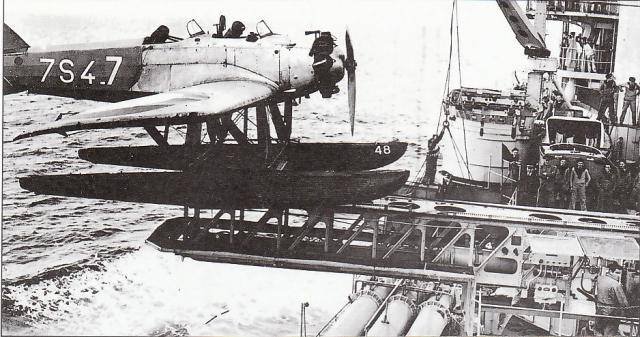
According to the state, the cruiser carried two seaplanes, one was constantly on the catapult cart, and the second, reserve, disassembled in a special hangar.
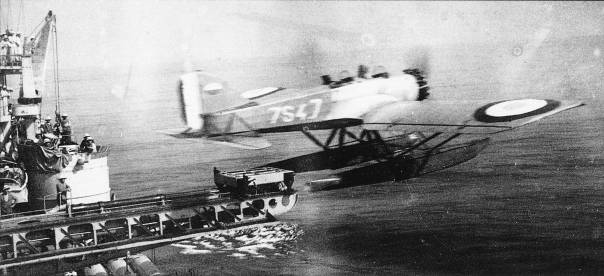
In fact, the only type that could be used with the Berten was the Gurdu-Lesser double-seat monoplane GL-832, which had very modest flight characteristics.
The command of the ship very low appreciated the capabilities of the seaplane, and therefore, after numerous reports, aircraft equipment was completely dismantled in 1942.
The propulsion system consisted of six thin-tube boilers of the Penoe system with superheaters. Parsons turbo gear units, four propellers from Brand.
The estimated power was declared at 102 hp, but in tests Emil Bertin showed much more. On tests on August 000, 8, Emil Bertin developed 1934 knots with a power of 39,67 107 hp. and 908 rpm.
In real-life conditions, the cruiser regularly developed a 33-knot speed, cruising range with a normal fuel supply was 6000 miles with a 15-knot course, 2800 miles at a speed of 20 knots or 1100 miles at a speed of 31 knots under the main turbines.
High speed caused constant problems with propellers that were subject to cavitation corrosion. The screws had to be changed often until finally other, more modern designs were developed.
In peacetime, the crew of Emil Bertin consisted of 22 officers, 9 chief foremen, 84 foremen and 427 sailors. Only 542 people. If the cruiser acted as the flagship of the destroyer formation (for example), it was planned to accommodate the commander of the formation and his headquarters on board - up to 25 people.
Naturally, as the service progressed, the cruiser underwent upgrades. In the case of Emil Bertin, these were numerous upgrades, so I will focus on those that influenced the combat efficiency of the ship.
During the pre-war period, the 37-mm anti-aircraft guns of the 1925 model were replaced by four paired 37-mm anti-aircraft installations of 1933 equipped with an automatic target designation system.
In August-September 1941, when Emil Bertin was in Martinique, 17 machine guns 12,7 mm Colt were shot on it, taken from the Curtis N-75 fighters purchased in the USA (2 on the roof of tower II, 2 on the sides of the conning tower, 2 on the aft superstructure in front of the pipe, 1 front and rear of the 90 mm anti-aircraft guns on the first deck, 3 on the roof of tower III, 4 in utah).
In addition, American VHF radios removed from the same fighters were installed on board seaplanes. The aircraft themselves in September 1942 were transferred to the 17S squadron in Fort de France, and this was the end of the epic with the aviation component.
In 1943, a number of premises were erected in Philadelphia in place of the hangar and catapults, actually extending the feed superstructure. Then (September-November 1943) the cruiser lost one gun. Moreover, he was not lost in battle.
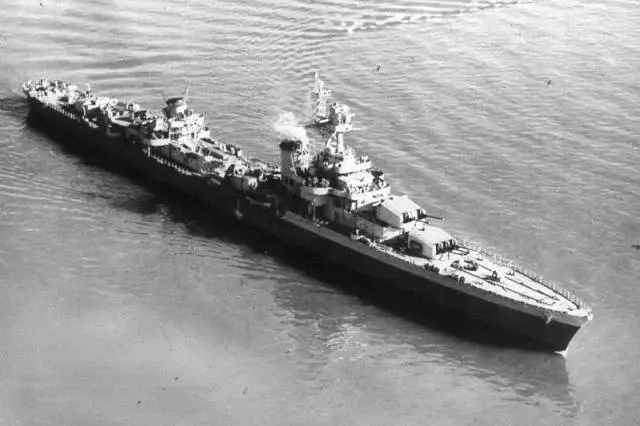
The fact is that in the USA they decided to launch the production of 152 mm shells for French ships. And in order to test the developed shells, it took a French gun. To carry out ballistic experiments, the middle gun was dismantled from tower II. And during the experiments, the barrel was experimented with for good, and since there was nothing to replace, the second half of the war the cruiser operated with eight guns.
As a compensation (joke), the Americans significantly increased the air defense of the ship. All machine guns were finally thrown away, and they installed 4 four-barrel 40-mm Bofors submachine guns Mk.2 (in pairs on the bow and stern superstructures) and 20 single-barrel 20-mm machine guns Oerlikon Mk.4 (2 on a forecastle in the area of the elevated tower ; 4 before the conning tower; 4 on the aft superstructure in the area of the previous catapult, 4 behind the twin 90 mm installation, 6 aft). The total ammunition included 24 thousand 40 mm and 60 thousand 20 mm rounds.
The ship was equipped with Type 128 ASDIC sonar, two aft bomb spreaders (below the upper deck) with eight 254 kg Mk.VIIH depth bombs and four Tornicroft airborne bombs with four 186 kg Mk.VII depth bombs each.
And finally, Emil Bertin received a set of American radar equipment, which in the USA was installed on destroyers. Search radars of type SA (detection range up to 40 miles) and type SF (detection range up to 15 miles), as well as recognition stations "friend or foe" VK and BL. All radio communications have been aligned with US Navy standards.
All these gifts made the cruiser heavier, so I had to make it easier. And the first thing that parted with Emil Bertin was ... mine equipment! But the normal displacement of the cruiser still increased to 7704 tons, full - up to 8986 tons.
The last significant modernization was carried out practically after the war, from January to September 1945. Then the middle gun of the second turret was finally installed again, replaced the barrels on all the other guns of the main caliber, dismantled the torpedo tubes and replaced them with the same 90 mm universal.
The cruiser received British fire control radars and a second Poiseau.
Combat service.
On May 17, 1935, Emil Bertin became part of the operating fleet and until August 1936 the ship was engaged in routine campaigns, maneuvers and visits.
Something similar to combat work happened in August 1936, the ship was sent to the shores of Spain, where a civil war broke out. Emil Bertin visited a number of Spanish ports, accompanying the Mexico packet boat, which was transporting French citizens from Spain.
When the Second World War began, Emil Bertin in Bizerte (Tunisia), from where, at the end of September 1939, made a trip to Beirut (Lebanon) and removed 57 tons of gold belonging to the Bank of Poland.
In December 1939, Emil Bertin joined the heavy cruiser Foch in Dakar, and on January 8, 1940, the cruisers sailed to the Central Atlantic, where they examined ships from Spain, Italy and Germany.
On March 28, Emil Bertin and the Bison counter-carrier successfully escorted a group of transports to Oran.
The next mission for the cruiser was a trip to Norway. The cruiser escorted the transportation of troops to Namsos when an interesting event occurred.
On April 13, the cruiser marched on the escort of the FP-1 convoy transporting troops from Brest to Namsos. On April 19, in the Namsfjord, the cruiser was attacked by a single German Ju-88 bomber from the II / KG 30 (pilot-lieutenant Werner Baumbach) and received a direct hit of a 500 kg bomb.
The bomb landed in the feed superstructure, flashed it, two decks, a longitudinal bulkhead, the outer skin just below the waterline and exploded in the water.
Not bad, right? Original, of course, but here the lack of armor played into the hands of the French. If the decks were booked, a 500 kg bomb would do quite serious things. Nevertheless, the through hole in the ship had to be shut up, and the cruiser went for repair to Brest. Norway lost without him.
After the repair, Emil Bertin again took up the transportation of gold!
On May 19, 1940, Emil Bertin, together with the cruiser Joan of Arc, traveled to Halifax, Canada. The cargo of Emil Bertin consisted of 100 tons of gold of the French national bank. On June 2, gold was unloaded, and already 9 ships returned to Brest for a new batch.
On June 12, Emil Bertin took on board about 290 tons of gold and again sailed to Halifax. Accompanied the cruiser counter-carrier "Gerfo". The ships arrived in Halifax on June 18, but did not have time to unload, a truce was signed. And after the signing of the armistice, an order came from France not to unload gold in the United States, but to go to Fort de France, in Martinique.
Gold did not allow many to live normally. So the British allies decided that releasing Emil Bertin back is dangerous, gold can get to the Germans, and therefore the British heavy cruiser Devonshire was sent to the parking lot of the French cruiser. Clearly on an unofficial visit ...
But the French officers were more perspicacious, and at night the Emile Bertin simply flushed away and on June 24 anchored in Martinique.
And for three years, in fact, the cruiser was a gold watchman in Martinique. While parked in Fort de France, its bow tower was constantly turned towards the port entrance in case of a possible British attack.
On May 1, 1942, by agreement of the governor of Martinique, Admiral Robert, with the American government, the Bertin, like the rest of the French ships in the West Indies, was disarmed and put into reserve. After the landing of Anglo-American troops in North Africa on November 8, 1942, relations between the United States and the Vichy government were severed, and the cruiser commander received orders to flood him, but, fortunately, refused to fulfill it.
On June 3, 1943, the colonial administration recognized the government of General de Gaulle, after which the return of ships to service began.
On August 22, Emil Bertin traveled to Philadelphia for repairs and upgrades. Upon completion, on January 2, 1944, the cruiser arrived at the Dakar-based base. From here, the ship made two patrols in the Atlantic, after which it was sent to Algeria.
In April-May 1944, Emil Bertin made five flights to Naples, transferring French and American troops. Three times in May 1944, they fired on German and Italian troops in the Anzio area, firing nearly 400 main-caliber shells.
On August 15, Emile Bertin and Dugue-Truen, as part of the operational unit TF-87 of Rear Admiral Lewis, supported the landing of the 36th American Infantry Division at the Camel site in Normandy.
The cruiser actively supported the landing, firing more than 600 shells of the main caliber.
On August 17, Emil Bertin passed to Toulon, where the 1st division of the Free France was advancing, and there it also supported the advance of the countrymen. On the account of the cruiser's commandos the suppression of the German battery.
Once the cruiser itself was exposed to a fair amount of danger when a battery of 340-mm guns from Cape Sepet gave three volleys. Fortunately, nothing happened.
On August 24, the Italian cargo ship “Randazzo”, which was aground near Nice, destroyed it with 78 shells of the main caliber, because there were fears that the Germans might remove it and flood it as a port entrance.
In total, until September 1, the cruiser fired at the enemy more than 1000 shells of the main caliber.
The last World War II operation for Emil Bertin was the support of troops in the Livorno area.
After the end of World War II, virtually all battle-worthy ships of the French fleet gathered in the Far East. And from one war, France was immediately in another - beyond Indochina. But if in World War II France somehow “won”, then in Indochina 9 years of war ended in shameful defeat.
In 1947, Emil Bertin was withdrawn from the fleet to the reserve, and then became a training ship. For 4 years, the ship sailed the Mediterranean Sea, preparing sailors. Since 1951, the cruiser has become a non-self-propelled training center due to the deterioration of machines and mechanisms. The last point was set in March 1961, when the ship was sold for scrap.
Summary.
Overall a good life for the ship. For the French - in general, it turned out gorgeous. The bulk of the warships of France cannot boast such successes.
But the Emil Bertin did not become the prototype of a large series of new generation cruisers. There were too many flaws, La Galissoniere class ships appeared too quickly, which were more balanced.
The La Galissoniers were superior to Emil Bertin in all but speed: in armament, defense, cruising range, seaworthiness.
Yes, Emil Bertin was a very innovative ship, but there are just a bunch of shortcomings: booking (more precisely, its complete absence), poor air defense, and inefficient fire control. Plus a complex and moody powerplant.
Therefore, the French naval command and preferred "Emile Bertin" "La Galissoniere." But more about that in the next article.
And to all history buffs, I will allow myself to recommend the excellent work of Sergey Patyanin, Light Cruiser Emil Bertin. France".
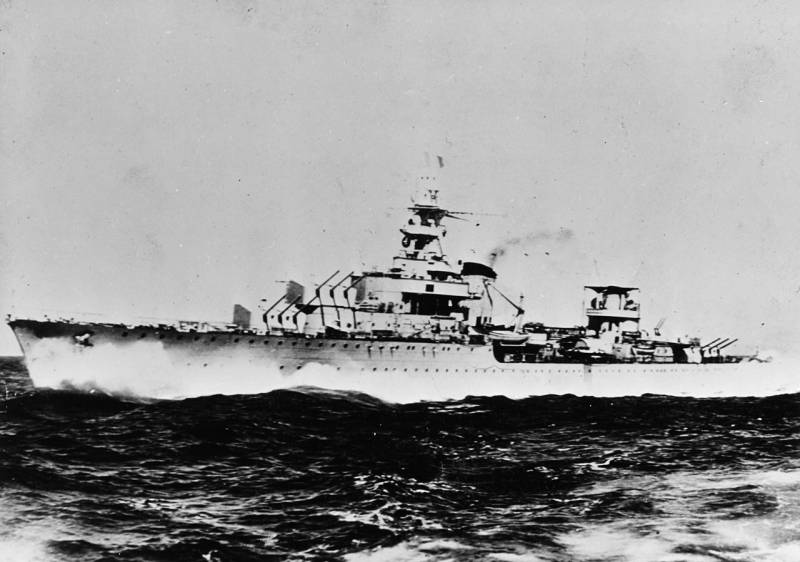
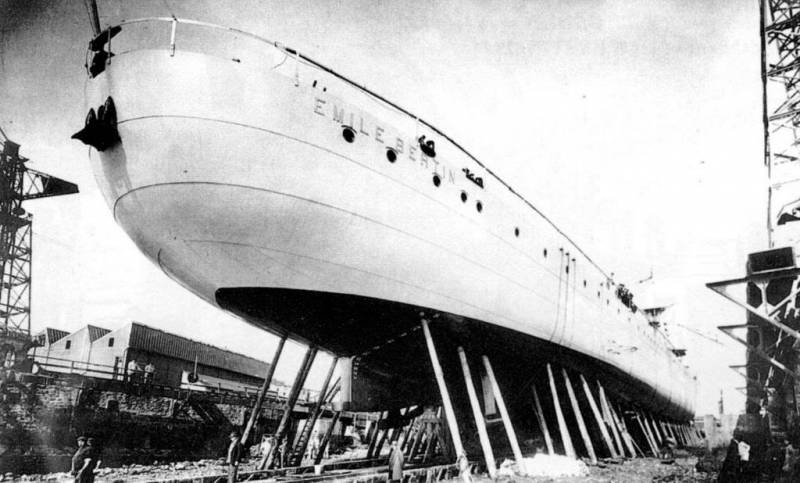
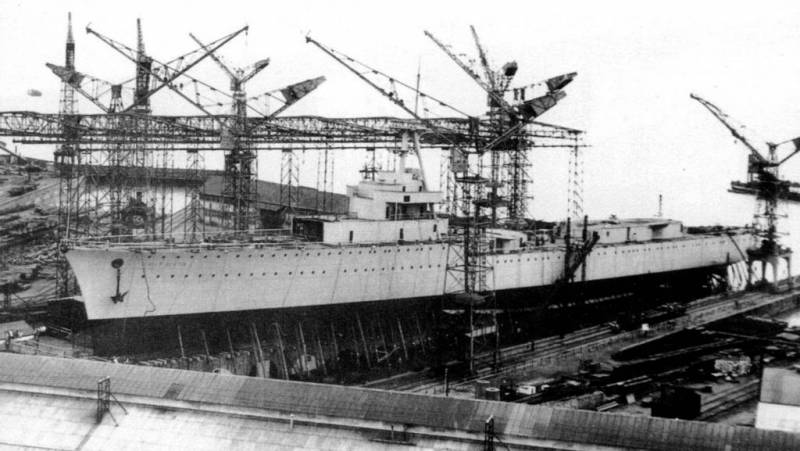
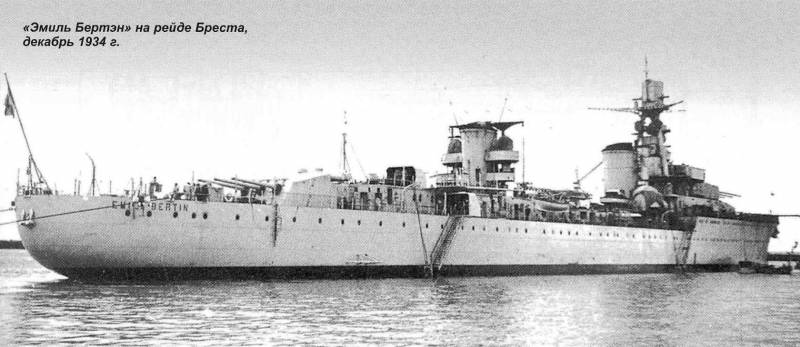
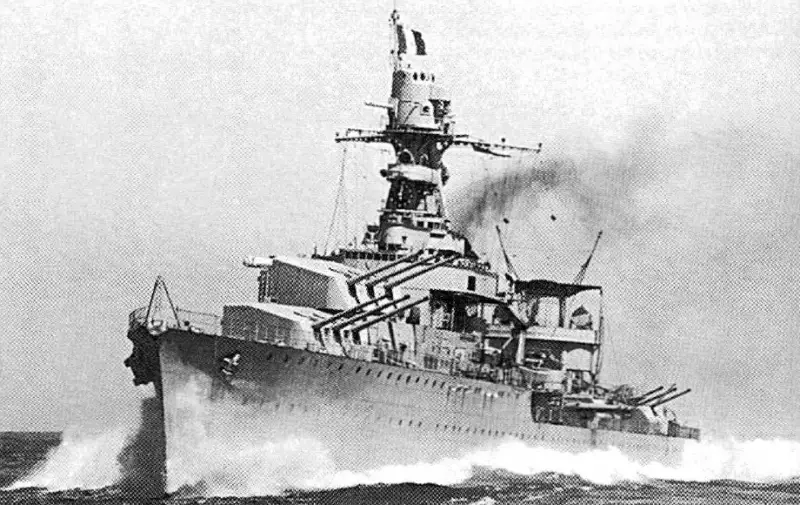
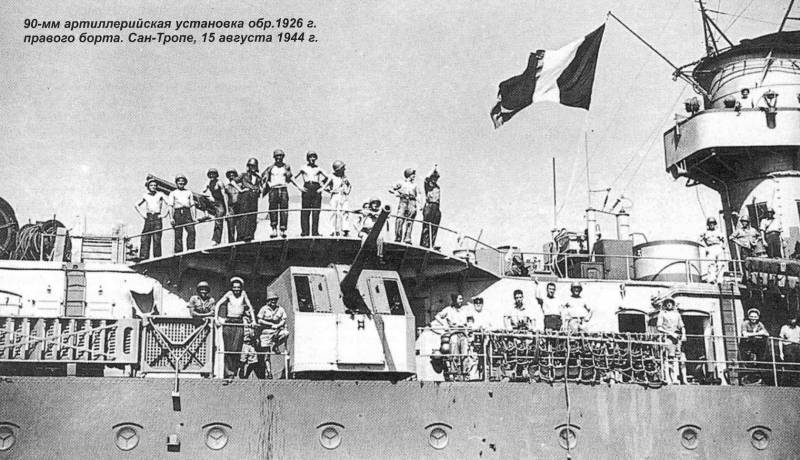
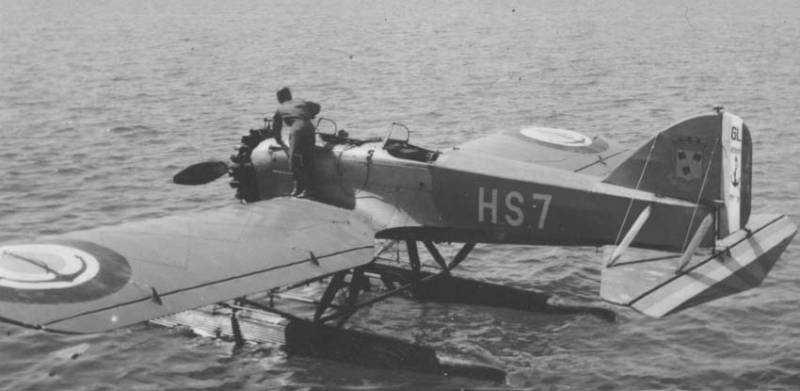
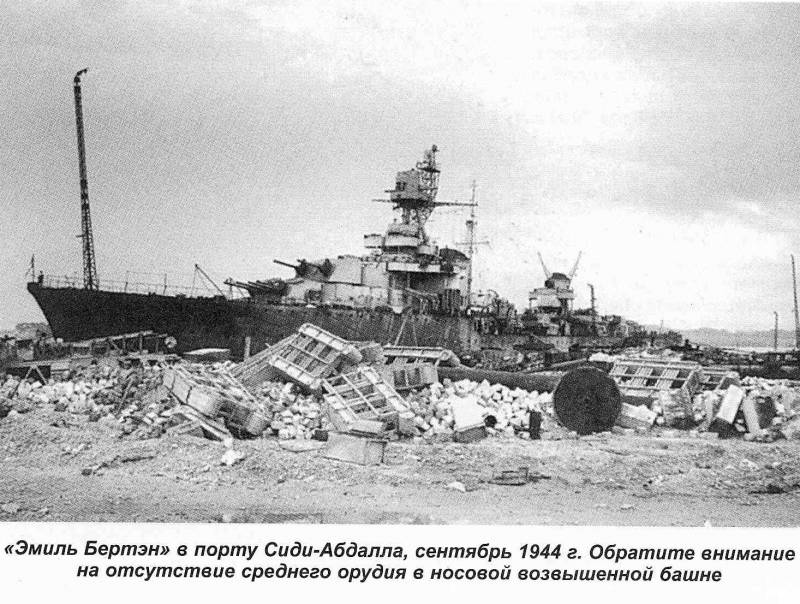
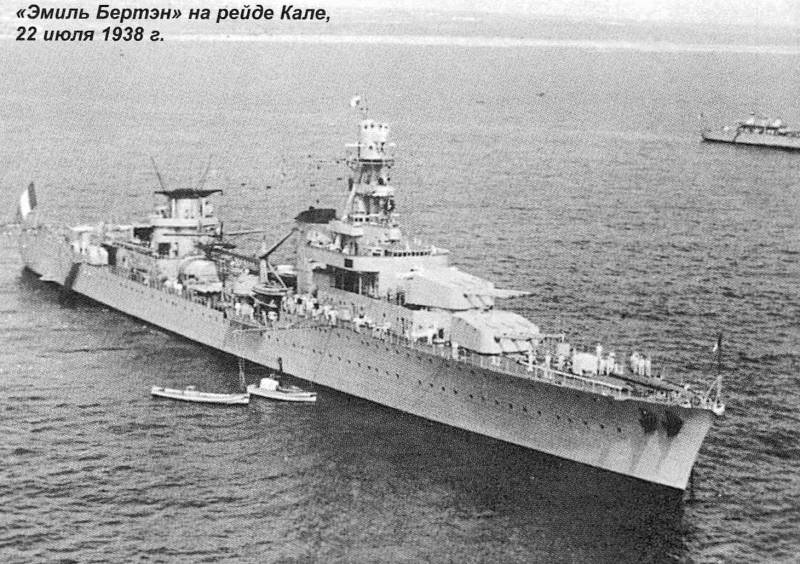
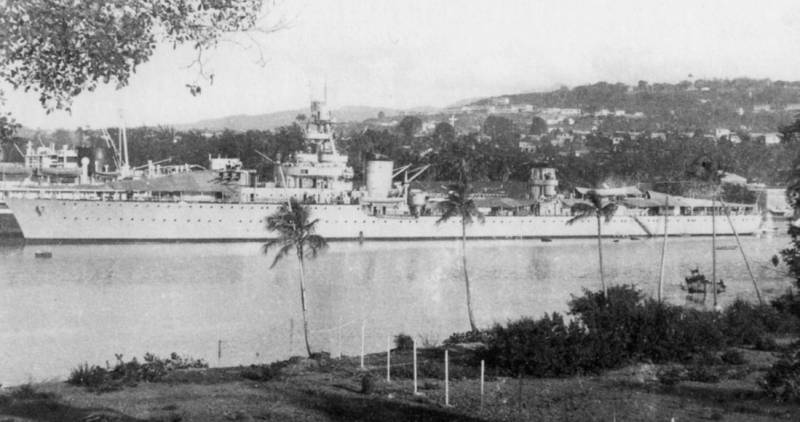
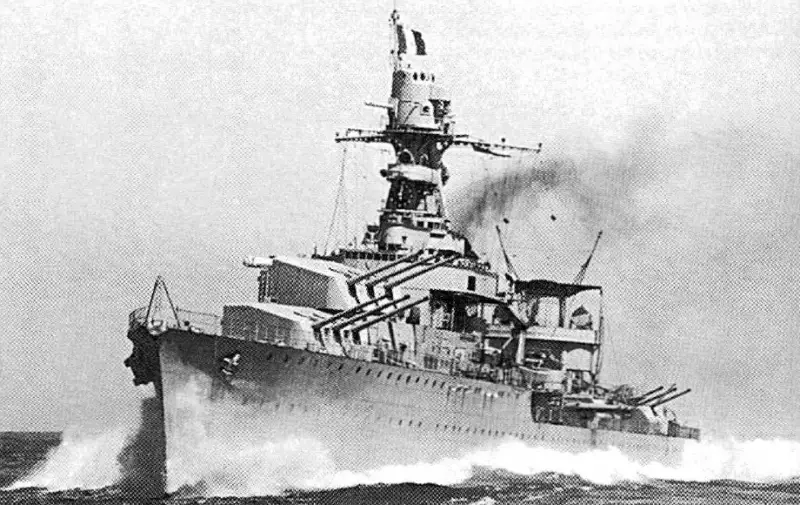
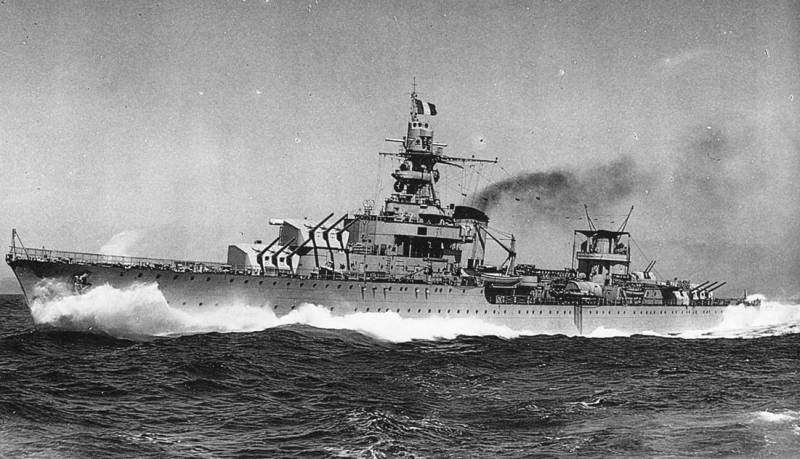
Information